Mini robots create a buzz
These microrobots are being built to enter hives, interact with bees and even dance for them.
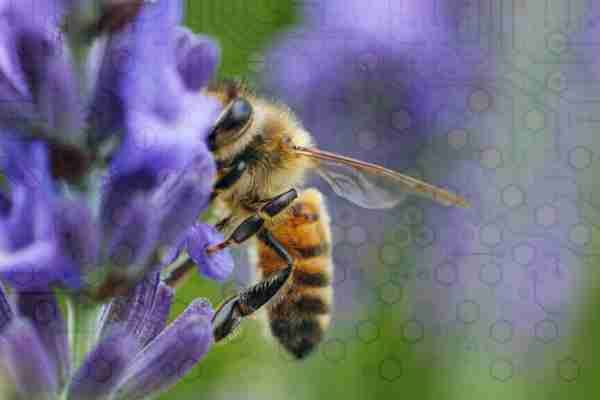
Could microbots come to the rescue of Earth’s most precious pollinators?
Honey bees play a crucial role in the production of foods for both animals and humans and are integral to maintaining biodiversity and a stable ecosystem.
The global bee population, however, is under pressure from a number of fronts: diminishing habitat, farm chemicals, fewer commercial beekeepers, disease and parasites.
Microrobots built to enter hives, interact with bees and even dance for them are among the latest scientific endeavours underway to protect the health of these precious pollinators. We take a look at some of these projects, plus some other bee-centric innovations.
RoboRoyale
In this robot bee project, the Queen bee takes centre stage. Queens produce the eggs that supply the worker population, enabled by a group of worker bees that help feed, clean and inspect them.
Scientists from around the world are collaborating in a four-year project called RoboRoyale which combines miniature robotics, artificial intelligence and machine learning. Their aim is to create bee robots with a mission to ‘groom’ the queen and feed her protein-rich foods at the right time to help stimulate egg laying.
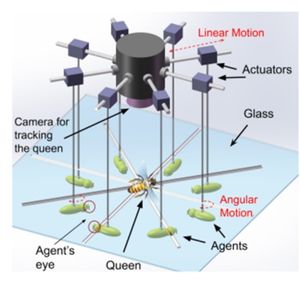
Roboroyale is funded by Horizon Europe and is led Dr Farshad Arvin from the Computer Science Department at Durham University, in collaboration with researchers from University of Graz, Czech Technical University and Middle East Technical University.
The tech, which is to be tested in coming months, will see six to eight robotic court bees, some sporting tiny cameras, steered inside an observation hive.
The goal to allow these robots to observe and interact with a living honeybee queen inside of a fully functional beehive. These robots will replace some of the queen’s court bees in order to monitor the status of the queen to and improve conditions when necessary.
Ultimately, the aim is to allow the robots to interact autonomously with a living queen inside a fully functioning beehive.
“Through a combination of machine learning, behavioural modelling and advanced control methods, our system will gradually learn how to groom the queen,” the project team says.
“Our special idea is that we can affect a whole ecosystem, potentially millions of plants and, in consequence, hundreds of millions of animals and other organisms, by simply affecting one single living organism in a natural and non-invasive way with robots.”
Hiveopolis
Another Horizon Europe-funded robot bee research project is Hiveopolis, which aims to build modern beehives that are fully adapted to today’s challenges.
As part of the project, a German team led by Tim Landgraf, a Professor of artificial and collective intelligence at Freie Universität Berlin, will equip bee colonies with an inbuilt dance robot.
When returning from foraging, real bees perform a ‘waggle dance’ that point other bees to the newly discovered food source.
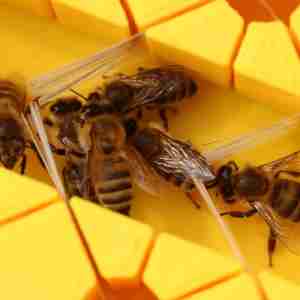
Just as with real bees, the dancing robot will aim to direct forager bees to good nectar or pollen sources to help prevent them from foraging at harmful food sources.
Hiveopolis would also include sensors and cameras to enable humans, robots, bees, and colonies to interact and form a higher level of social cooperation.
Bee Bricks
Bee Bricks are made by Green&Blue, which is based in Cornwall in the UK, and was co-founded by husband and wife team Kate and Gavin Christman.
Bee Bricks are nesting sites for solitary bees and can stand in a garden or be used in place of standing building bricks.
The bricks create more habitat for non-swarming solitary bees such as red mason and leafcutter bees.
These solitary bees are facing a dramatic decline in numbers due to disease, an increase in chemical use and habitat loss.

Bee bricks can be a simple way to do something to help the declining bee population, alongside bee-friendly planting and other wildlife-friendly measures, its makers say.
Flow Hive
This startup from Byron Bay in Australia founded by bee-keeping father and son team, Stuart and Cedar Anderson.
Inspired by a wish to find a way to harvest honey that was less stressful on the bees, Flow Hive, was almost a decade in the making.
It lets honey flow out of the hive at the turn of a tap, instead of the traditional (messy) method of honey extraction that is also disruptive and sometimes lethal to bees.
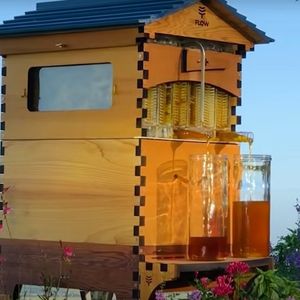
After much trial and error, the Flow Hive was born. Armed with the new design, the pair raised US$250,000 in pre-orders in just 15 minutes on crowdfunding platform Indiegogo in February 2015, and in 2 months had raised $12m in pre-orders.
There are now more than 72,000 Flow Hives in use in around 130 countries, and the Flow Hive has won multiple awards for innovation, design, marketing and business
Australian food manufacturer Bega Cheese, which manufactures the B Honey brand, is collaborating on the Purple Hive Project to help protect bees from Varroa mites.
The Purple Hive Project, launched in 2020, involves the development of solar-powered artificial intelligence-based devices that provide alerts in real time.
The Purple Hive will use 360-degree camera technology to observe each individual bee entering the hive to determine if Varroa destructor is present.
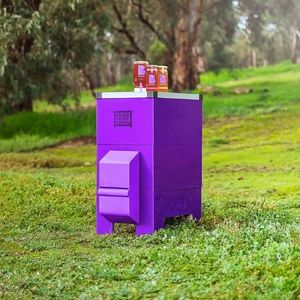
If Varroa destructor is detected, a real-time alert is sent so the hive can be quarantined to stop the spread.
These are hives designed to be placed in ports around the country to help prevent the mite’s spread across Australia.
They have been trialled at the Port of Melbourne with a long-term vision of placing Purple Hives at high-risk entry points around Australia to assist with early detection and monitoring, starting with its ports.





